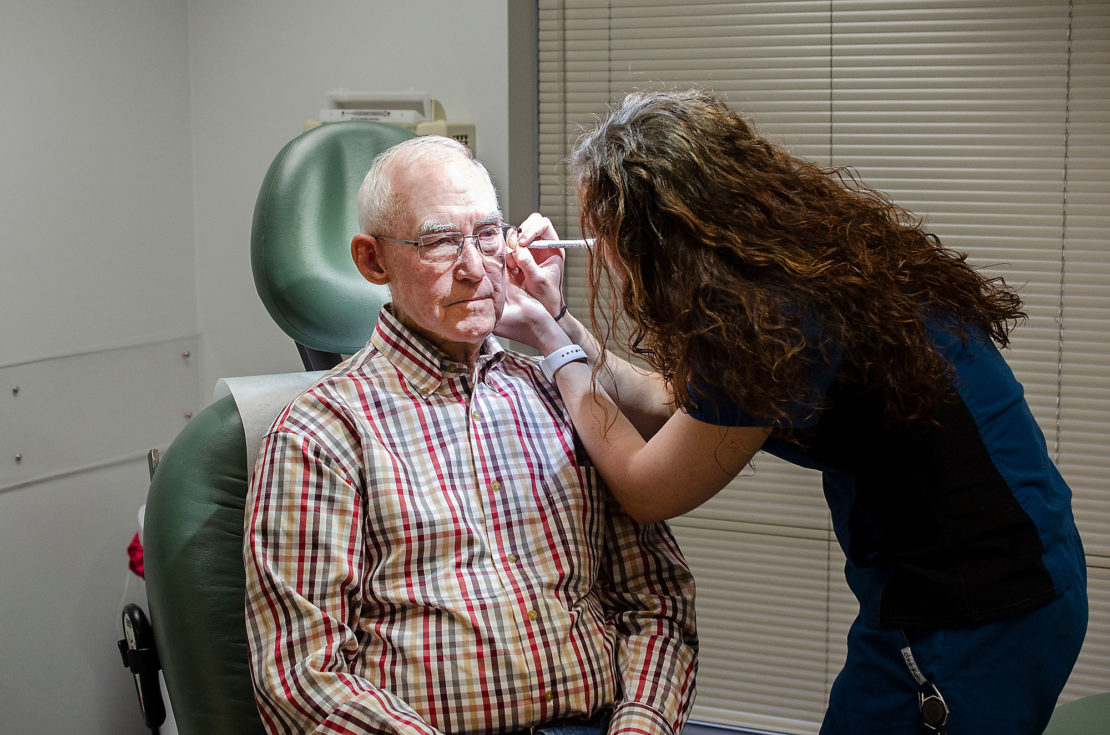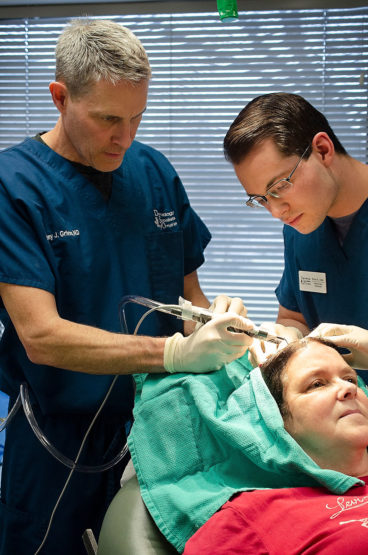Mohs Micrographic Surgery is an outpatient procedure first developed by Dr. Frederic Mohs at the University of Wisconsin over 50 years ago. During his long, distinguished career, he saw it evolve into what it is today- the procedure with the very highest cure rate for skin cancer. Mohs Micrographic Surgery is of most use for “high risk” skin cancers, more difficult to treat because of location, tumor type or size, or because of recurrence after previous treatment. Using a microscope, the surgeon precisely tracks any small extensions of tumor, thus removing the tumor completely while removing an absolute minimum of normal tissue.

Mohs surgery is performed in stages. First, all visible tumor is removed. Then, with each stage, a thin but complete layer of tissue is removed from the edges of the tumor site, color-coded and mapped, then prepared in our laboratory and examined by the surgeon under the microscope. Any tumor in the examined tissue margins is mapped, guiding the next layer. The steps are repeated until the skin cancer is completely removed. It may take an hour or more to process each layer. We apply a light temporary dressing to the wound after removing each layer so you can read or watch TV in a private waiting room. On average, one or two layers completely remove most skin cancers. Sometimes, several layers are necessary, and not always predictable.

When your skin cancer is completely removed, the next step is to decide your best option for the post-operative wound. We will discuss with you the pros and cons of what we judge to be the best options. In some cases, allowing a wound to heal naturally (without sutures) will provide the best aesthetic and functional result in the long run. In other cases, suturing a wound can result in an almost undetectable long-term result. If you decide to have the wound sutured, generally the procedure is done the same afternoon at our clinic. The sutures are usually dissolvable. We will give you wound care instructions. Since we expect some drainage from the wound in the first several hours after procedure, we will apply an absorbent overnight dressing when you leave. Plan to take it easy after your procedure. There is usually not much discomfort afterwards, leading some to over-exert, which is unwise (swelling or bleeding may result). Acetominophen (Tylenol) is effective for any post-operative discomfort. Avoid aspirin (and other anticoagulants) for two days after surgery. Ice over the bandage is helpful both for any soreness and to minimize swelling.
We see you back if possible to check the wound at one or two weeks postoperatively. We will see you back as often and as long as necessary to ensure that the healing process is proceeding appropriately. The goal is to obtain the most imperceptible long-term (over one year) result. Early on, redness and irregular contour are expected. Usually the area will flatten and soften by one month, and be well settled by 6 months, although healing takes place under the skin for up to a year.
We value the relationship between you and your physician. We also value the trust your referring physicians place in us, and the opportunity to help their patients for years to come. We will remove your skin cancer and oversee the early and intermediate healing process, but we cannot take you as a regular patient if you were referred for surgery by another dermatologist. We feel the transition back to that physician is important, and will help arrange your follow-up appointment, unless you have already done so or plan to.
Although Mohs Micrographic Surgery has the highest cure rate of any method of skin cancer removal, recurrences sometimes happen. Also, having had one skin cancer increases the risk of having another new skin cancer elsewhere on your skin. We strongly encourage you and your family to monitor your skin regularly for any suspicious changes, and bring them to your physician’s attention. For prevention, protect your skin from direct sunlight, especially at mid-day. Finally, see your dermatologist for periodic checkups.
